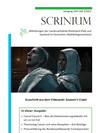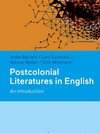Selected Publications
Von Luanda und Maputo nach Ost-Berlin: Erinnerungen afrikanischer Werktätiger an die DDR
Autor:in: Marcia C. Schenck
Übersetzer:in: Joe Paul Kroll
C.H. Links Verlag, 2025
Etwa 24.000 mosambikanische und angolanische »Vertragsarbeiter« lebten in den 1980er-Jahren in der DDR. Eine gute Ausbildung und ordentlich bezahlte Jobs hatte man ihnen versprochen. Doch die Realität sah häufig anders aus. Bis heute kämpfen viele um Anerkennung und Geld. Basierend auf mehr als 260 lebensgeschichtlichen Interviews legt die Autorin Erinnerungen, Erfahrungen und transnationale Begegnungen ehemaliger angolanischer und mosambikanischer Arbeitsmigrant:innen in der DDR offen und zeichnet deren Leben zwischen der sogenannten Zweiten und der Dritten Welt nach. Sie legt damit die erste Monografie vor, die sich aus Sicht der Migrant:innen mit dem Thema befasst.
Anglophone Verse Novels as Gutter Texts: Postcolonial Literature and the Politics of Gaps
Author: Dirk Wiemann
Bloomsbury Academic 2023
The verse novel is a form particularly prolific in the postcolonial world and among diasporic or minoritarian writers in the Global North. This study concentrates on two of the most prominent areas in which verse novels distinguish themselves from the prose novel to read texts by Derek Walcott, Anne Carson, Bernardine Evaristo, Patience Agbabi and others: In ‘planetary’ verse novels from the Caribbean, Canada, Samoa and Hawai’i, the central trope of the volcano evokes a world in constant un/making; while post-national verse novels, particularly in Britain, modify the established paradigms of imagined communities. Dirk Wiemann’s study speculates whether the resurgence of verse novels correlates with the apprehension of inhabiting a world that has become unpredictable and dangerous but also promising: a ‘post-prosaic’ world.
Cancel Classics? — Was die Dekolonisierungsdebatte mit uns zu tun hat
Autor:in: Katharina Wesselmann
Scrinium 2, 2021, 4–19
Was hat die Dekolonisierungsdebatte mit der Altertumswissenschaft zu tun? Dieser Frage geht Katharina Wesselmann bezugnehmend auf verschiedene Kolleg*innen nach. Strukturell gesehen handelt es sich um eine Forschungs- und Studienrichtung, die als recht weiß und elitär gilt. Zudem werden antike Symbole zunehmend von rechten Gruppen vereinnahmt (vor allem in den USA). In der Forschung lassen sich aber zum Beispiel Vergleiche zwischen dem transatlantischen Sklavenhandel und antiken Settings ziehen. Auch der Eurozentrismus kann hinterfragt werden. Neue Wege in der Forschung können zur Zielscheibe von Kritik machen, aber dennoch ist einiges in Bewegung und beispielhafte Diversifizierungsmaßnahmen entstehen und werden weiterentwickelt.
Postcolonial Literatures in English: An Introduction
Authors: Anke Bartels, Lars Eckstein, Nicole Waller, Dirk Wiemann
J. B. Metzler 2019
The term ‘postcolonial literatures in English’ designates English-language literatures from Africa, Asia, the Americas and Oceania, as well as the literatures of diasporic communities who have moved from those regions to the global north. This volume introduces the central themes of postcolonial literary studies and delineates how these themes are reflected and elaborated in exemplary literary works by postcolonial authors from around the world. It also offers succinct definitions of key terms like Orientalism, hybridity, Indigeneity or writing back.
"The Making of Tupaia’s Map: A Story of the Extent and Mastery of Polynesian Navigation, Competing Systems of Wayfinding on James Cook’s Endeavour, and the Invention of an Ingenious Cartographic System"
Authors: Lars Eckstein & Anja Schwarz
The Journal of Pacific History 54.1 (2019): 1-95.
Tupaia’s Map is one of the most famous and enigmatic artefacts to emerge from the early encounters between Europeans and Pacific Islanders. It was drawn by Tupaia, an arioi priest, chiefly advisor and master navigator from Ra‘iat̄ea in the Leeward Society Islands in collaboration with various members of the crew of James Cook’s Endeavour, in two distinct moments of mapmaking and three draft stages between August 1769 and February 1770. To this day, the identity of many islands on the chart, and the logic of their arrangement have posed a riddle to researchers. Drawing in part on archival material hitherto overlooked, in this long essay we propose a new understanding of the chart’s cartographic logic, offer a detailed reconstruction of its genesis, and thus for the first time present a comprehensive reading of Tupaia’s Map. The chart not only underscores the extent and mastery of Polynesian navigation, it is also a remarkable feat of translation between two very different wayfinding systems and their respective representational models.





